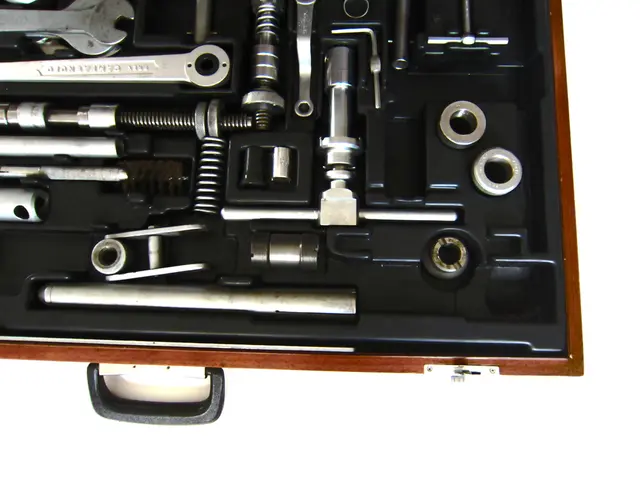Discovered bone-tipped hunting instrument, dating back to ancient times, is believed to have been crafted by Neanderthal human ancestors.
A significant discovery has been made in the world of archaeology, with the unearthing of Europe's oldest known bone-tipped hunting weapon in a cave in southwest Russia. The artifact, dated between 70,000 and 80,000 years ago, is believed to have been fashioned by Neanderthals and is providing fresh insights into their technological evolution and adaptability during the Middle Paleolithic period.
The bone spear tip, described as a "unique pointy bone artefact," is a proportionally, dimensionally, and functionally effective bone projectile that represents Europe's oldest known bone-tipped hunting weapon. This discovery challenges outdated views of Neanderthals as unsophisticated and suggests they engaged in complex behaviours, including the production of specialized tools from diverse materials.
The crafting of a bone tip for a spear indicates complex tool production involving shaping durable organic materials, not just stone or flint. This reflects advanced knowledge and skill, demonstrating Neanderthals' technological sophistication. The bone spear tip's creation also implies more effective hunting weapons, potentially allowing Neanderthals to hunt large animals at a distance with greater success.
The bone spear tip, which is likely made from bison bone, was not used repeatedly, leading to the suspicion that it was probably fired once. Additionally, it struck a hard object, suggesting it was deployed. The relic was first discovered in 2003 but has only been analyzed in detail recently.
The study, published in the Journal of Archaeological Science, suggests that some Neanderthal groups in Europe developed bone-tipped hunting weapons independently. It does not indicate any influence from modern humans on Neanderthals' invention of bone-tipped hunting weapons. Interestingly, the vast majority of bone tools or weapons appear in the archaeological record only after the arrival of Homo sapiens in Eurasia.
Despite the study not providing information about the number of successful kills associated with the bone spear tip, its discovery adds to our understanding of Neanderthals' skill, ingenuity, and capacity for innovation. The bone spear tip is unique to the Mezmaiskaya cave and is the oldest such artifact associated with Neanderthals in the Lower Middle Paleolithic context across Europe and Asia.
Currently, there are very few bone tools or weapons associated with Neanderthal sites from the Middle Paleolithic, making this discovery all the more significant. The study does not discuss the potential impact of the bone spear tip discovery on our understanding of Neanderthals' skill, ingenuity, and capacity for innovation, but it is clear that this finding enriches our perspective on their technological evolution and adaptability during this critical period in human history.
The discovery of the bone spear tip, a unique artifact from the Mezmaiskaya cave, sheds light on the capability of Neanderthals in technological advancements. This discovery, initially made in 2003 but recently analyzed in detail, reveals their skill in complex tool production, specifically shaping durable organic materials like bone.
The application of advance data and cloud computing in the study, published in the Journal of Archaeological Science, further illuminates the independent development of bone-tipped hunting weapons by certain Neanderthal groups in Europe during the Lower Middle Paleolithic.
Moreover, this significant finding underscores the need for further research in environmental-science and space-and-astronomy to understand the environmental influences leading to such technological progress among Neanderthals during the Middle Paleolithic period and beyond.




